Navigating Vietnamese cuisine can be an exciting culinary adventure, and understanding menus is key to a great experience. Do These Restaurants Have English Menus? Absolutely! Many restaurants, especially in tourist-heavy areas, offer English menus to cater to international visitors. If you’re planning a trip to Vietnam and want a hassle-free dining experience, SIXT.VN is your go-to travel partner. We provide essential travel services, ensuring your trip is smooth and enjoyable. Enjoy your culinary journey and explore the best of Vietnamese dishes with ease. Contact us today for reliable Hanoi travel services, airport transfers, and hotel bookings.
1. Choosing the Right Dining Experience in Vietnam
From bustling city centers to serene countryside towns, Vietnam provides a diverse range of dining options tailored to various tastes and budgets. The type of establishment often gives clues about the dining experience you can expect.
For a Casual Dining Experience:
- Quán Cơm: These local eateries are perfect for experiencing authentic Vietnamese cuisine in a relaxed setting.
- Nhà Hàng: Offering a slightly more formal setting than quán cơm, these restaurants serve a wider array of Vietnamese dishes.
- Quán Ăn Vặt: Ideal for quick bites and street food favorites, these spots are perfect for sampling local snacks.
For a More Upscale Experience:
- Nhà Hàng Cao Cấp: These high-end restaurants provide a luxurious ambiance, extensive menus, and impeccable service.
- Fine Dining Restaurants: Often featuring international cuisine or a fusion of Vietnamese and Western flavors, these establishments offer a sophisticated dining experience.
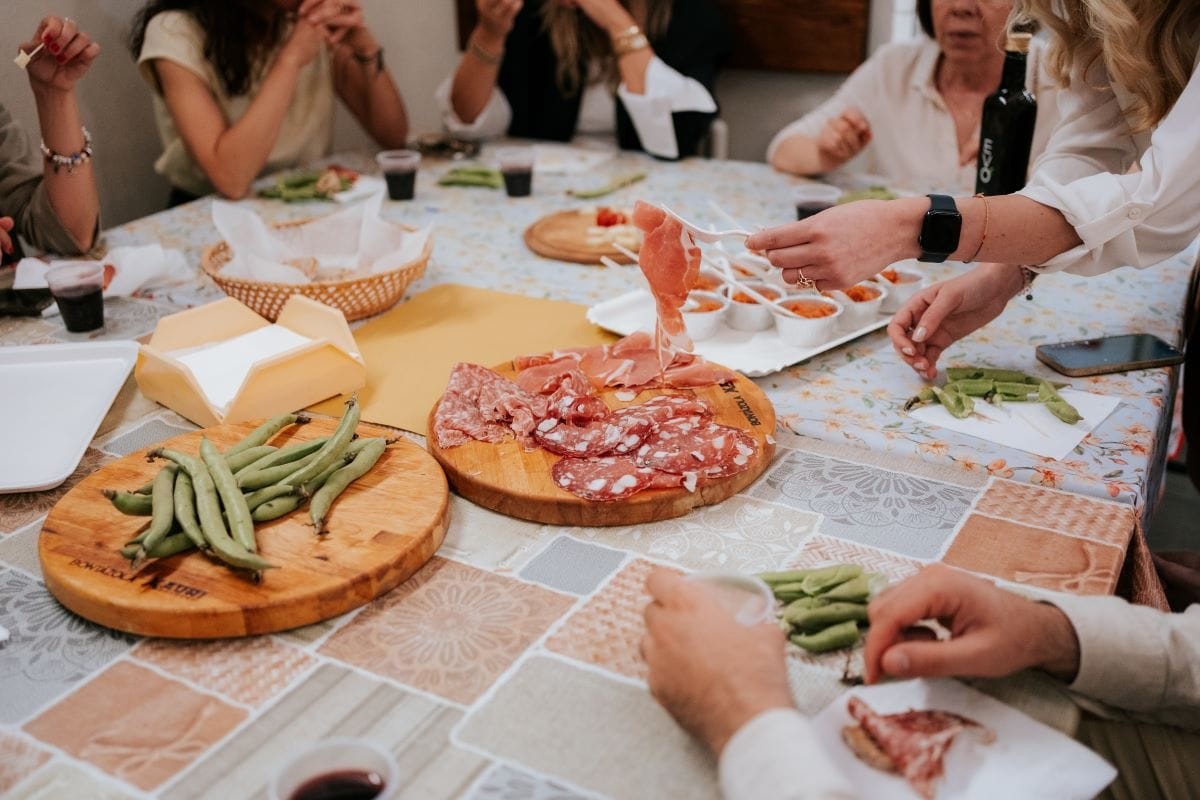 People enjoying an outdoor meal in Hanoi, Vietnam, showcasing the vibrant street food scene.
People enjoying an outdoor meal in Hanoi, Vietnam, showcasing the vibrant street food scene.
2. Understanding Meal Times in Vietnam
Meal times in Vietnam typically follow a pattern similar to many Western countries, with slight variations. Lunch is usually served from 11:30 AM to 1:30 PM, and dinner is served from 6:30 PM to 9:00 PM. Many establishments accept reservations, especially during peak hours.
To book a table for four people at 7 PM, you can say in Vietnamese, “Tôi muốn đặt bàn cho bốn người vào lúc bảy giờ.” However, English is widely spoken in tourist areas, making reservations easy. SIXT.VN can assist you with reservations, ensuring you have a seamless dining experience.
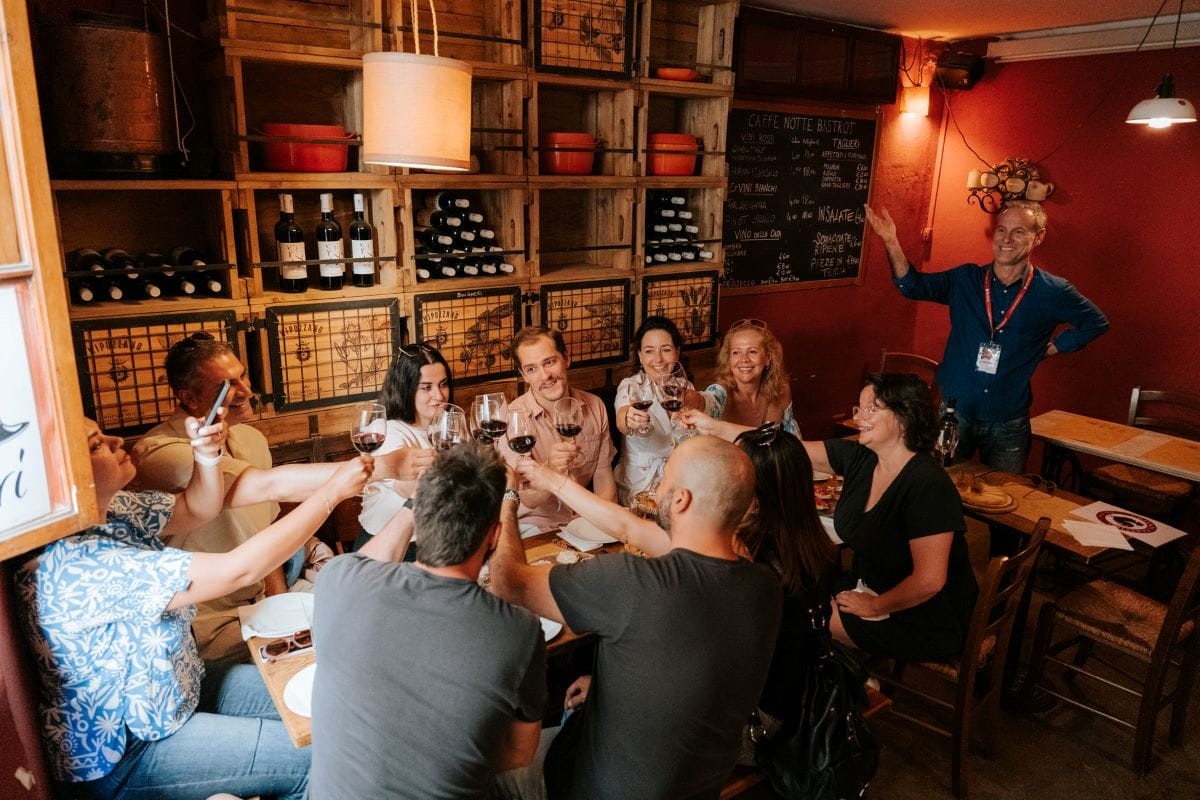 A group of tourists enjoying a Vietnamese cooking class, learning to prepare traditional dishes.
A group of tourists enjoying a Vietnamese cooking class, learning to prepare traditional dishes.
3. Deciphering the Vietnamese Menu
Vietnamese menus are generally divided into sections based on dish types. You are not obligated to order from every section, but it’s common to select at least two dishes for a complete meal. Sharing dishes is a popular practice, allowing you to sample a variety of flavors.
For instance, a couple might share a gỏi cuốn (spring roll) appetizer, order individual phở (noodle soup) bowls, and then share a cơm sườn (broken rice with grilled pork) main course.
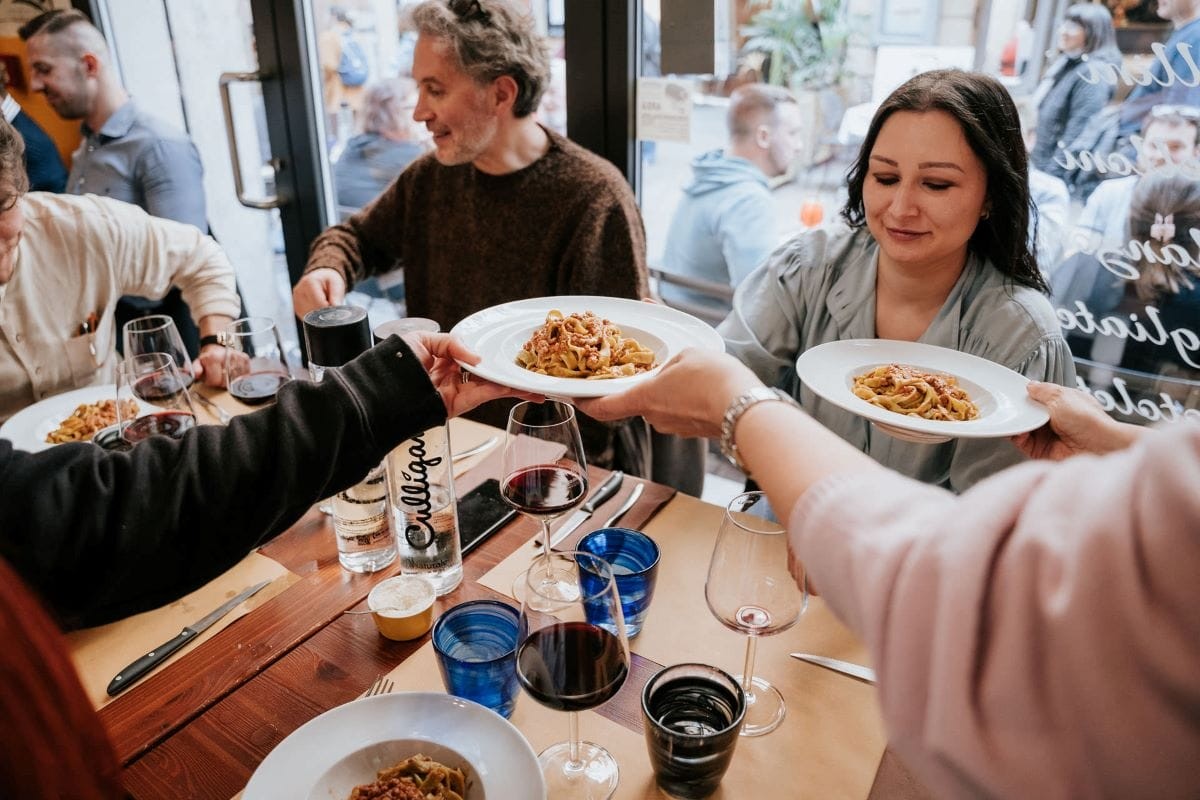 A spread of Vietnamese dishes including pho, spring rolls, and banh mi.
A spread of Vietnamese dishes including pho, spring rolls, and banh mi.
4. Navigating the Vietnamese Meal: A Course-by-Course Guide
4.1. Khai Vị (Appetizers)
Khai vị means “to open the taste,” similar to an appetizer. Vietnamese menus offer a variety of fresh and flavorful options.
Popular khai vị dishes include:
- Gỏi Cuốn: Fresh spring rolls filled with vermicelli noodles, shrimp, pork, and herbs, served with a peanut dipping sauce.
- Nem Rán: Crispy fried spring rolls, often filled with pork, shrimp, and vegetables, served with a tangy fish sauce.
- Nộm: A refreshing salad made with shredded green papaya, carrots, peanuts, and herbs, dressed with a sweet and sour vinaigrette.
Ask for “món đặc biệt của quán” (the house specialty) to discover seasonal and regional delights.
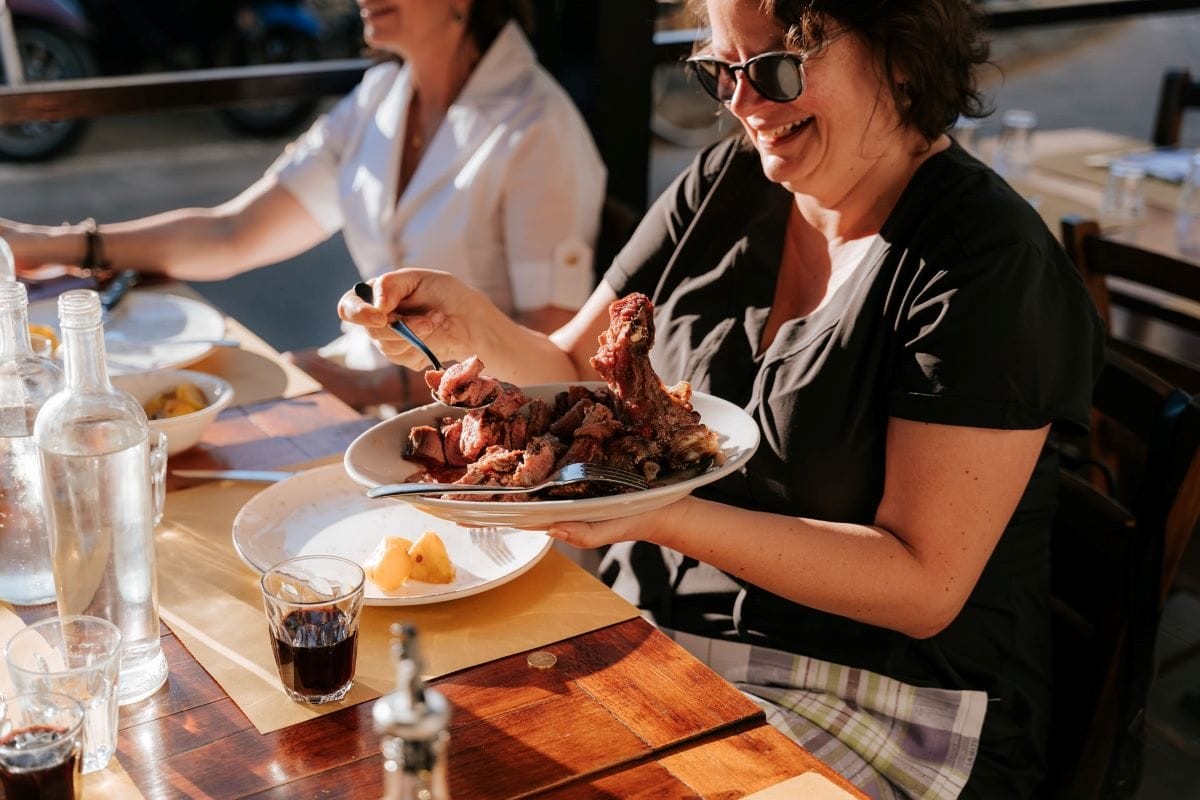 A plate of freshly prepared gỏi cuốn, showcasing the vibrant colors of the ingredients.
A plate of freshly prepared gỏi cuốn, showcasing the vibrant colors of the ingredients.
4.2. Món Súp (Soups)
Soups are a staple in Vietnamese cuisine, offering a comforting and flavorful start to any meal.
Must-try món súp dishes include:
- Phở: The iconic Vietnamese noodle soup, typically made with beef (phở bò) or chicken (phở gà), served in a flavorful broth with herbs and spices.
- Bún Riêu: A rich tomato-based soup with rice vermicelli, crab paste, tofu, and vegetables.
- Canh Chua: A tangy sour soup with fish or shrimp, tomatoes, pineapple, bean sprouts, and herbs.
These soups showcase the diverse regional flavors of Vietnam, from the northern-style phở to the southern-style canh chua.
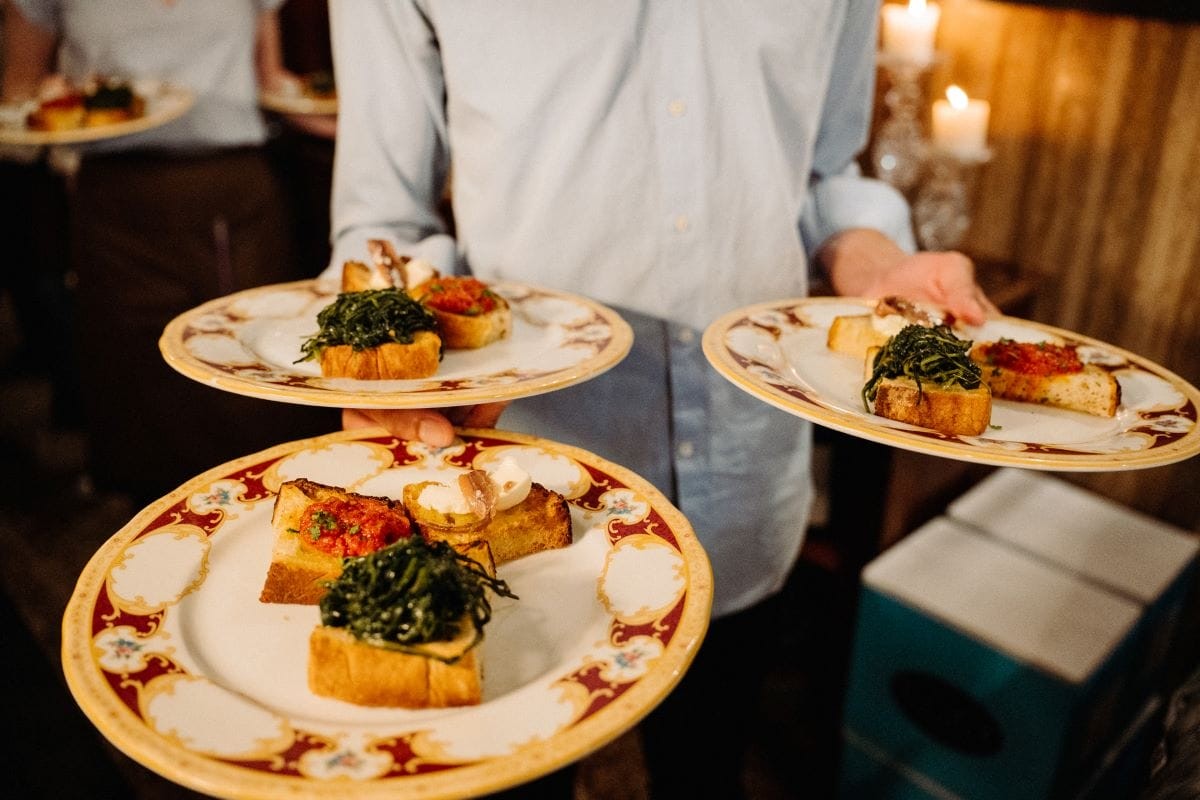 A steaming bowl of phở, garnished with fresh herbs and spices.
A steaming bowl of phở, garnished with fresh herbs and spices.
4.3. Món Chính (Main Courses)
Món chính, or main dishes, offer a variety of meat, fish, and vegetable options, showcasing the heart of Vietnamese cuisine.
Popular món chính dishes include:
- Cơm Sườn: Broken rice served with grilled pork chops, pickled vegetables, and fish sauce.
- Gà Kho Gừng: Chicken braised in ginger sauce, a flavorful and aromatic dish often served with rice.
- Cá Kho Tộ: Fish braised in a clay pot with caramelized sauce, offering a rich and savory flavor.
The flavors and ingredients used in these dishes vary significantly by region, reflecting Vietnam’s diverse culinary landscape.
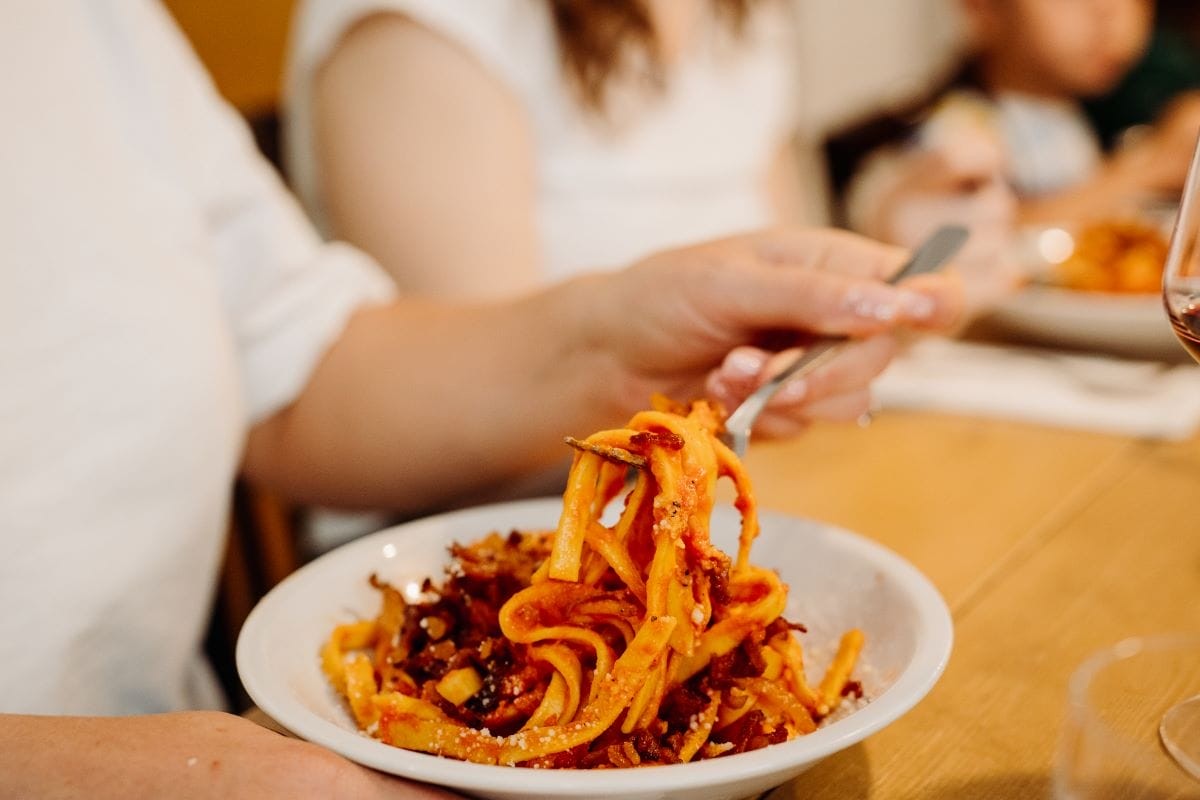 A person enjoying a plate of cơm sườn, complete with a grilled pork chop and pickled vegetables.
A person enjoying a plate of cơm sườn, complete with a grilled pork chop and pickled vegetables.
4.4. Món Rau (Vegetable Dishes)
Món rau, or vegetable dishes, are often served as side dishes or as part of a shared meal, providing a healthy and flavorful complement to the main courses.
Popular món rau dishes include:
- Rau Muống Xào Tỏi: Stir-fried water spinach with garlic, a simple yet flavorful dish.
- Đậu Que Xào: Stir-fried green beans with garlic or other seasonings.
- Nộm Hoa Chuối: Banana flower salad, a refreshing and crunchy salad with peanuts and herbs.
These vegetable dishes highlight the freshness and variety of local produce in Vietnam.
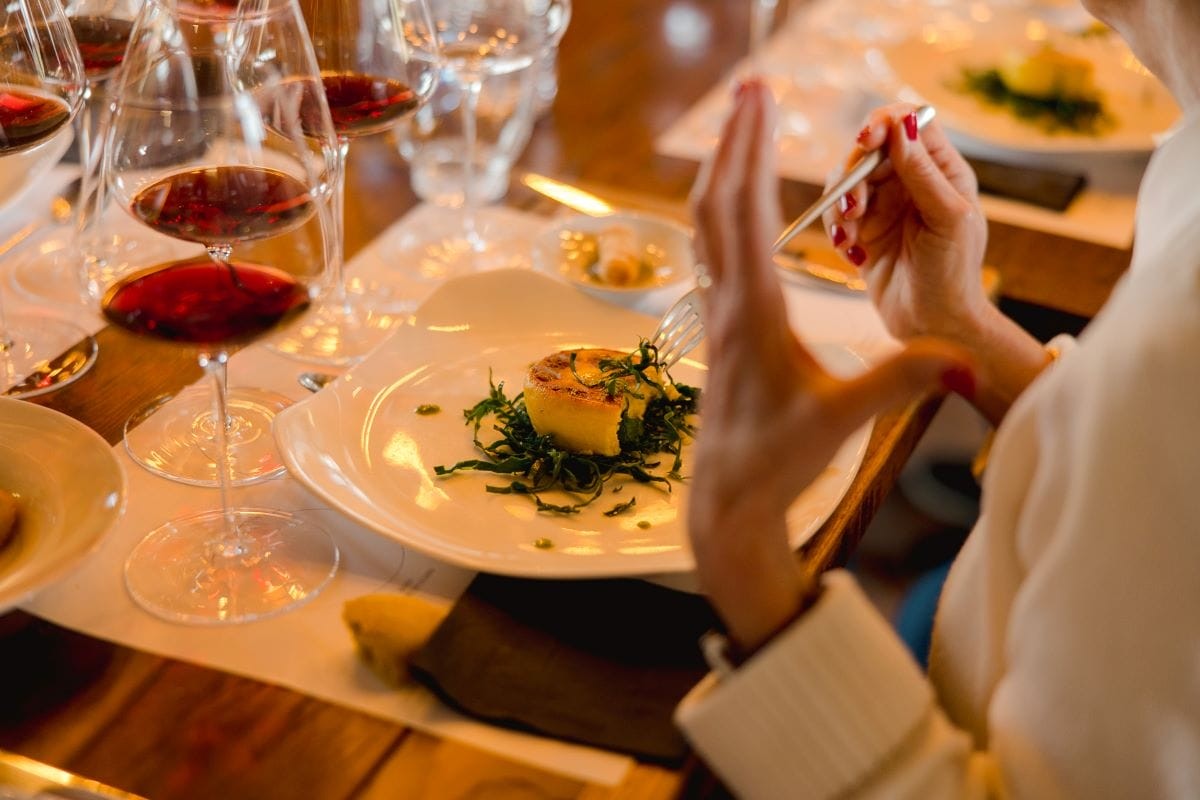 A close-up of rau muống xào tỏi, glistening with garlic-infused oil.
A close-up of rau muống xào tỏi, glistening with garlic-infused oil.
4.5. Cơm, Bún, Mì (Rice, Vermicelli, Noodles)
Rice, vermicelli, and noodles are essential components of Vietnamese cuisine, often served as a base for main dishes or as standalone meals.
Popular dishes include:
- Cơm Chiên: Fried rice with various ingredients such as shrimp, chicken, or vegetables.
- Bún Chả: Grilled pork served with vermicelli noodles, fresh herbs, and a dipping sauce.
- Mì Xào: Stir-fried noodles with meat and vegetables, a quick and satisfying dish.
These dishes demonstrate the versatility of rice, vermicelli, and noodles in Vietnamese cuisine.
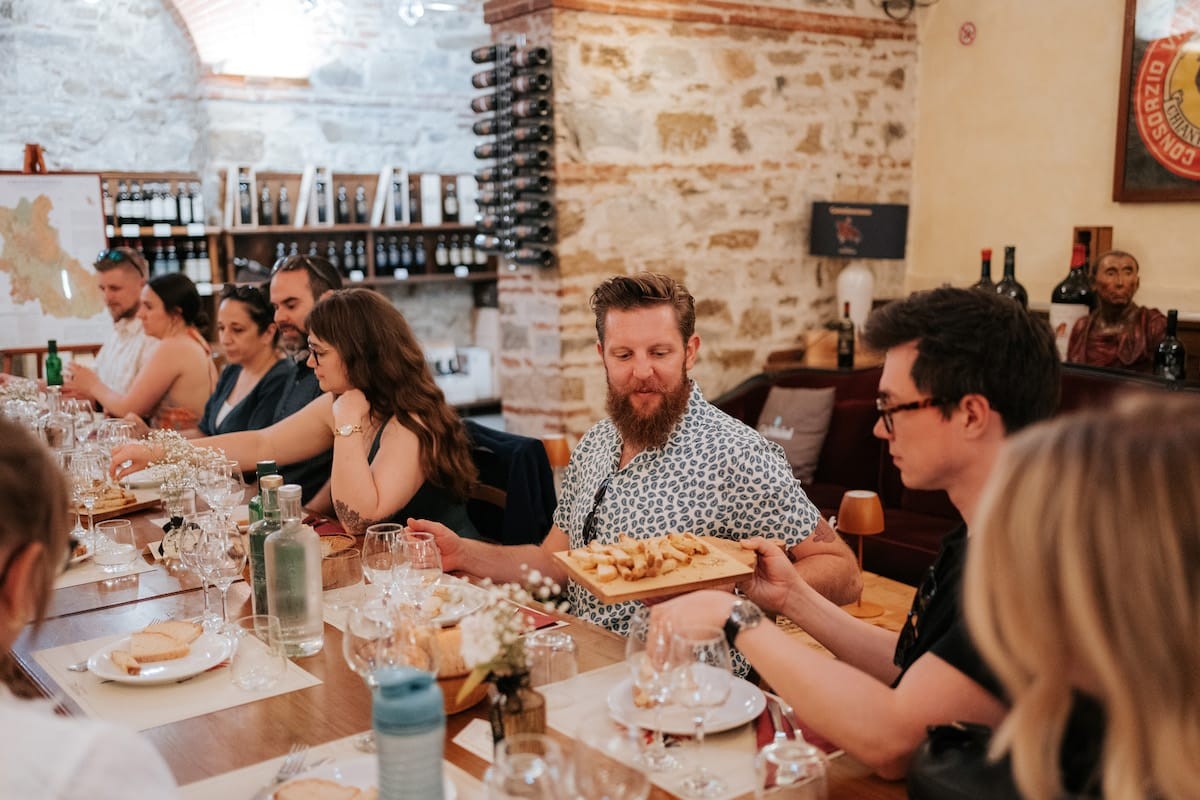 A steaming plate of bún chả, showcasing the grilled pork and fresh herbs.
A steaming plate of bún chả, showcasing the grilled pork and fresh herbs.
4.6. Tráng Miệng (Desserts)
Many great meals end with a delightful dessert, ranging from light and refreshing options to rich and indulgent treats.
Popular tráng miệng choices include:
- Chè: A sweet dessert soup with various ingredients such as beans, tapioca pearls, and coconut milk.
- Kem: Ice cream, often featuring local flavors like coconut or durian.
- Hoa Quả: Fresh fruit, a simple and healthy way to end a meal.
For an extra-special treat, ask your server for “món tráng miệng đặc biệt của quán” (the house specialty dessert), as these often feature traditional family recipes and seasonal ingredients.
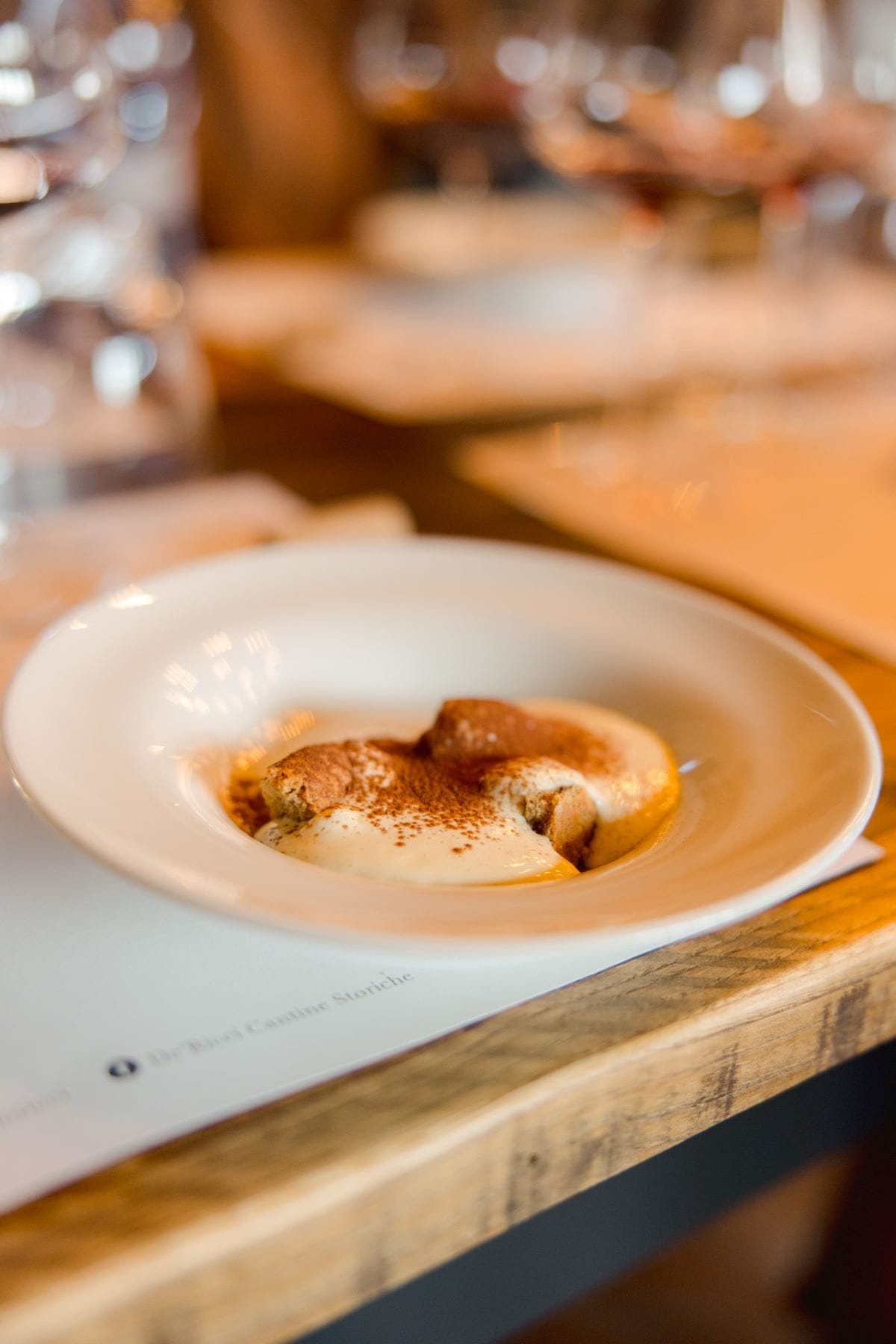 A colorful display of chè, featuring various sweet soups and toppings.
A colorful display of chè, featuring various sweet soups and toppings.
4.7. Đồ Uống (Beverages)
Vietnamese cuisine pairs well with a variety of beverages, from refreshing teas to local beers.
Popular beverage choices include:
- Trà Đá: Iced tea, a ubiquitous and refreshing drink served at most Vietnamese restaurants.
- Cà Phê Sữa Đá: Iced coffee with condensed milk, a strong and sweet coffee enjoyed throughout the day.
- Bia Hơi: Freshly brewed draft beer, a popular choice for locals and tourists alike.
Cocktails are less common during meals, but many restaurants offer a selection of wines and spirits.
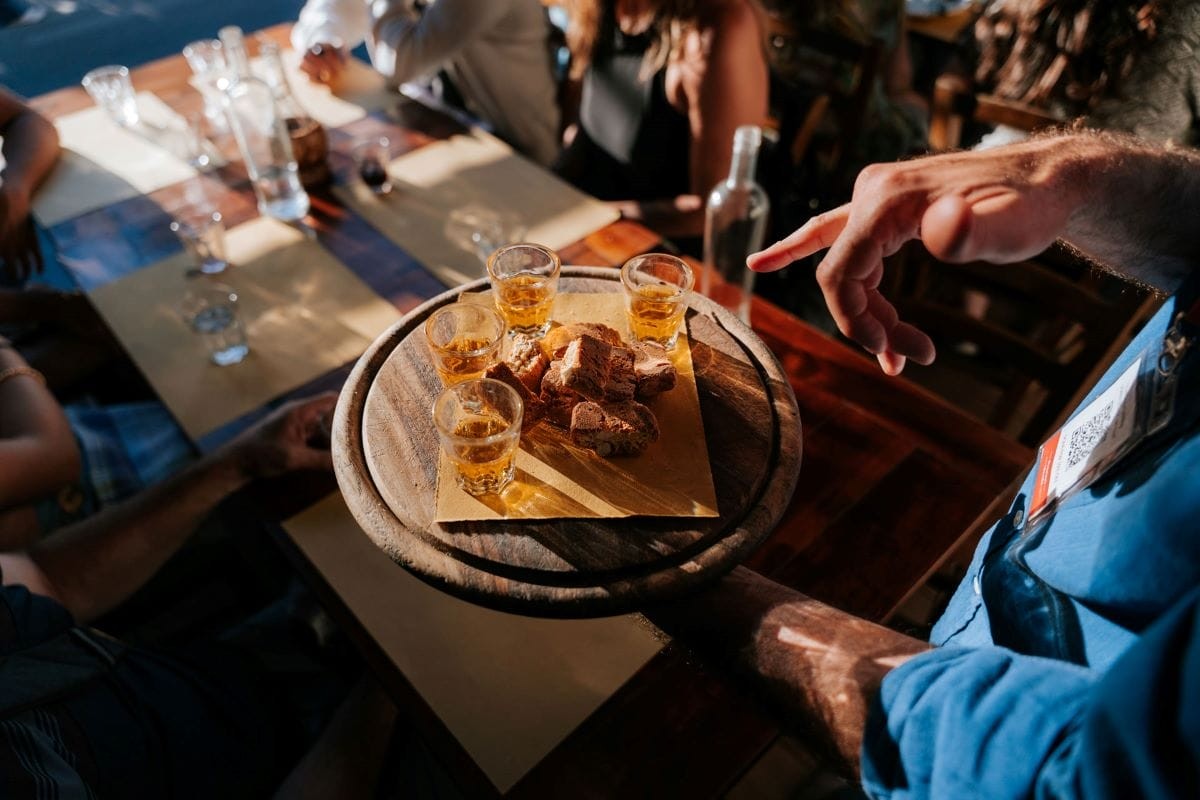 A glass of cà phê sữa đá, showcasing the rich coffee and condensed milk layers.
A glass of cà phê sữa đá, showcasing the rich coffee and condensed milk layers.
5. Essential Tips for Dining Out in Vietnam
Don’t hesitate to ask your server for recommendations (“Bạn có thể giới thiệu món nào không?”), request a translation of ingredients (“Cái này là gì?”), or inform them of any food allergies (“Tôi bị dị ứng với…”).
A small fee, known as “phí phục vụ” (service fee), may be added to the bill, especially in touristy areas. Tipping is not customary in Vietnam, but rounding up the bill or leaving a small amount is always appreciated for good service.
Chúc ngon miệng! (Enjoy your meal!)
 The entrance of a cozy Vietnamese restaurant, inviting diners to experience authentic cuisine.
The entrance of a cozy Vietnamese restaurant, inviting diners to experience authentic cuisine.
6. Addressing the Language Barrier: English Menus and Communication
6.1. Prevalence of English Menus
In major cities like Hanoi and Ho Chi Minh City, many restaurants catering to tourists offer English menus. These menus often include descriptions of the dishes and their ingredients, making it easier for international visitors to make informed choices. Even in smaller towns, restaurants in tourist hotspots are likely to have English translations available.
6.2. Using Translation Apps
For restaurants without English menus, translation apps can be invaluable. Google Translate allows you to scan menus and receive instant translations. Other apps like Pleco (for Chinese) can also be helpful, as some dishes have Chinese-influenced names.
6.3. Basic Vietnamese Phrases
Learning a few basic Vietnamese phrases can enhance your dining experience and show respect for the local culture. Some useful phrases include:
- Xin chào: Hello
- Cảm ơn: Thank you
- Cho tôi thực đơn: Menu, please
- Cái này là gì?: What is this?
- Tôi muốn cái này: I would like this
- Tính tiền: Check, please
6.4. Visual Communication
When language barriers persist, visual communication can be effective. Pointing to dishes on the menu or using pictures on your phone can help convey your order. Many Vietnamese restaurants display pictures of their popular dishes, making it easier for non-Vietnamese speakers to choose.
6.5. Seeking Assistance from Locals
Don’t hesitate to ask locals for assistance. Vietnamese people are generally friendly and willing to help tourists. Hotel staff, tour guides, or even passersby can offer recommendations or help translate menus.
6.6. Online Reviews and Recommendations
Websites like TripAdvisor and local food blogs often provide reviews of restaurants, including information about the availability of English menus and the quality of the food. These resources can help you choose restaurants that cater to international visitors.
6.7. Cooking Classes
Participating in a Vietnamese cooking class can provide insight into the ingredients and preparation methods of various dishes. This knowledge can make it easier to understand menus and appreciate the nuances of Vietnamese cuisine.
6.8. Dietary Considerations
If you have dietary restrictions, it’s important to communicate them clearly. Some useful phrases include:
- Tôi là người ăn chay: I am vegetarian
- Tôi bị dị ứng với…: I am allergic to…
- Không có thịt: No meat
- Không có hải sản: No seafood
Written cards with these phrases can also be helpful, especially in restaurants where English is not widely spoken.
6.9. Utilizing SIXT.VN for Assistance
SIXT.VN offers comprehensive travel services, including assistance with restaurant recommendations and reservations. Our local experts can provide personalized suggestions based on your preferences and dietary requirements, ensuring a smooth and enjoyable dining experience.
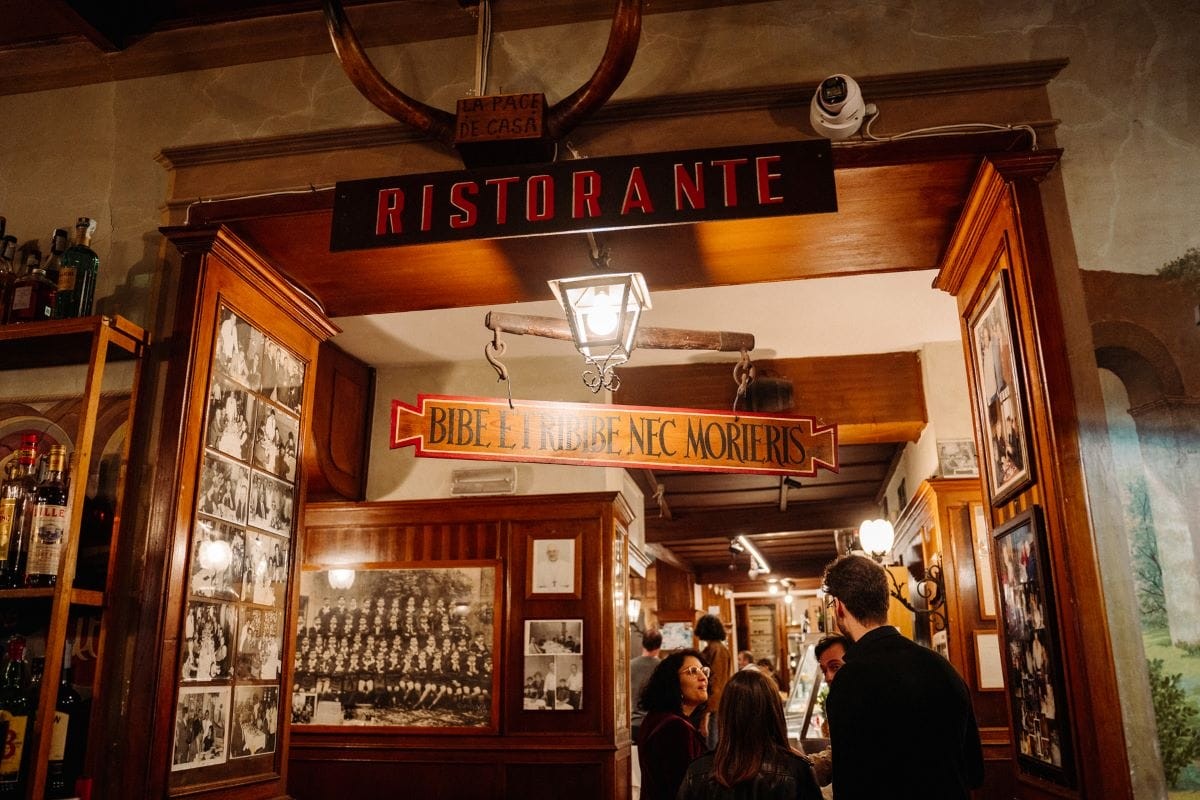 Tourists exploring the vibrant streets of Hanoi, Vietnam, surrounded by street food vendors and local eateries.
Tourists exploring the vibrant streets of Hanoi, Vietnam, surrounded by street food vendors and local eateries.
7. Frequently Asked Questions About Vietnamese Dining
7.1. What is the difference between phở and bún?
Phở is a type of noodle soup made with flat rice noodles, typically served with beef (phở bò) or chicken (phở gà) in a flavorful broth. Bún refers to vermicelli noodles, which are thin, round rice noodles often used in dishes like bún chả (grilled pork with vermicelli) and bún riêu (crab and tomato soup with vermicelli).
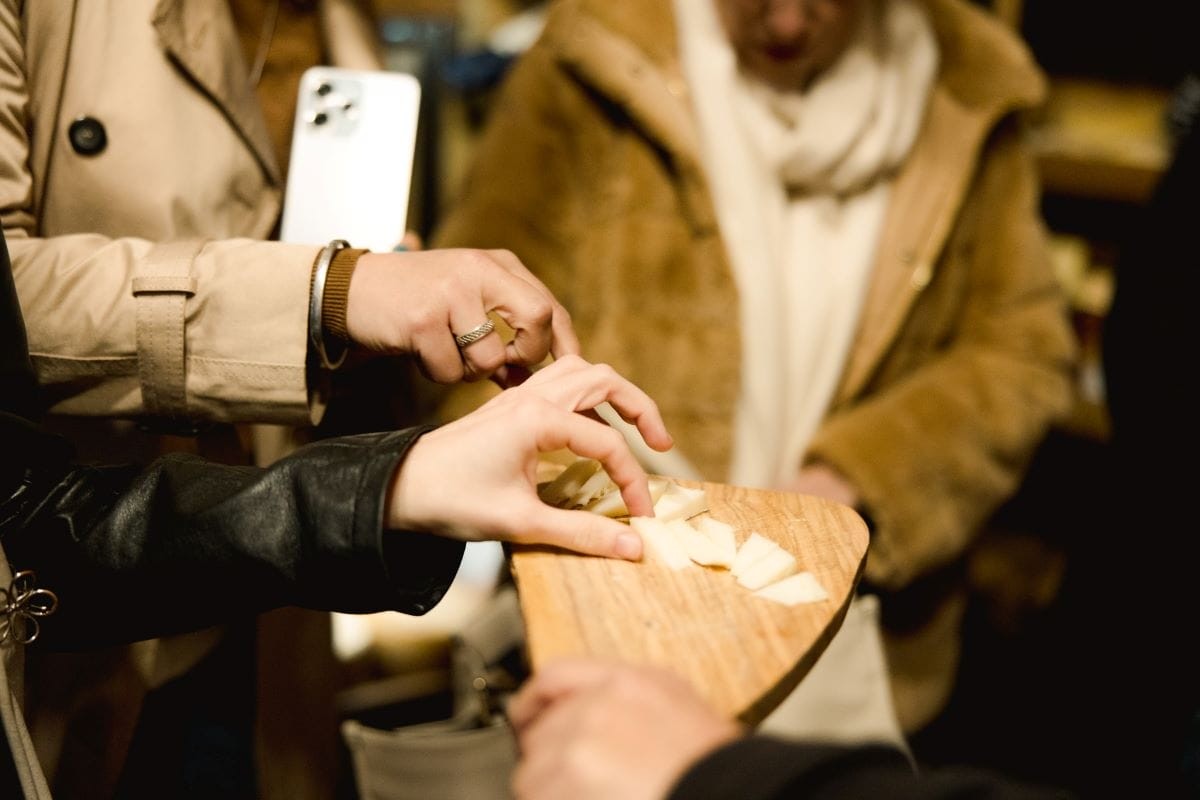 A close-up shot of a bowl of bún chả, highlighting the vermicelli noodles, grilled pork, and fresh herbs.
A close-up shot of a bowl of bún chả, highlighting the vermicelli noodles, grilled pork, and fresh herbs.
7.2. Are Vietnamese desserts very different from other cuisines?
Vietnamese desserts often emphasize fresh ingredients, subtle sweetness, and unique textures. Chè, a sweet dessert soup, is a popular choice, featuring ingredients like beans, tapioca pearls, and coconut milk. Other common desserts include fresh fruit and yogurt with various toppings. The emphasis is on light, refreshing flavors rather than rich, heavy sweets.
 A colorful assortment of Vietnamese chè desserts, showcasing the variety of ingredients and textures.
A colorful assortment of Vietnamese chè desserts, showcasing the variety of ingredients and textures.
7.3. Do Vietnamese menus offer vegetarian options?
Yes, many Vietnamese restaurants offer vegetarian options. Common vegetarian dishes include đậu phụ sốt cà chua (tofu in tomato sauce), rau muống xào tỏi (stir-fried water spinach with garlic), and nấm xào (stir-fried mushrooms). Be sure to inquire about the ingredients used in broths and sauces, as some may contain meat or fish products.
 A plate of vegetarian spring rolls, filled with fresh vegetables and herbs.
A plate of vegetarian spring rolls, filled with fresh vegetables and herbs.
7.4. Is it customary to tip in Vietnamese restaurants?
Tipping is not customary in Vietnam, but it is becoming more common, especially in tourist areas. If you receive exceptional service, rounding up the bill or leaving a small tip (5-10%) is always appreciated.
7.5. What are some common Vietnamese spices and herbs?
Vietnamese cuisine relies heavily on fresh herbs and spices to create its distinctive flavors. Some common ingredients include:
- Rau thơm: A generic term for various fresh herbs, including mint, cilantro, and basil.
- Sả: Lemongrass, used to add a citrusy flavor to many dishes.
- Ớt: Chili peppers, used to add heat.
- Gừng: Ginger, used to add warmth and spice.
- Nước mắm: Fish sauce, a staple condiment used to add savory depth.
7.6. What is bia hơi, and where can I find it?
Bia hơi is freshly brewed draft beer, a popular and affordable beverage in Vietnam. It is typically found in local establishments, often referred to as quán bia hơi, where it is served in tall glasses at a very low price. Bia hơi is a great way to experience the local culture and socialize with Vietnamese people.
7.7. How do I order coffee in Vietnam?
Coffee is an integral part of Vietnamese culture, and there are several ways to enjoy it. Cà phê sữa đá (iced coffee with condensed milk) is a popular choice, known for its strong, sweet flavor. Cà phê đen đá (iced black coffee) is another option for those who prefer a less sweet taste. Coffee is typically brewed using a phin filter, a small metal device that sits on top of the glass.
7.8. What should I know about street food in Vietnam?
Street food is a must-try experience in Vietnam, offering a wide array of delicious and affordable dishes. When eating street food, look for vendors with a high turnover of customers, as this is usually an indication of freshness and quality. Be sure to try local specialties like bánh mì (Vietnamese sandwich), xôi (sticky rice), and gỏi cuốn (fresh spring rolls).
7.9. How can SIXT.VN help with my dining experience in Vietnam?
SIXT.VN offers a range of services to enhance your dining experience in Vietnam. We can provide personalized restaurant recommendations based on your preferences, assist with reservations, arrange transportation to and from restaurants, and offer translation assistance to help you navigate menus and communicate with restaurant staff. Our goal is to make your culinary journey as smooth and enjoyable as possible.
7.10. Are there any dining etiquette tips I should be aware of in Vietnam?
While dining etiquette in Vietnam is generally relaxed, there are a few customs to be aware of. It is polite to wait for the eldest person at the table to begin eating before you start. Use chopsticks to eat, and avoid sticking them upright in your rice bowl, as this resembles incense offerings for the deceased. When sharing dishes, use the serving utensils provided, and avoid using your personal chopsticks to take food from communal plates.
Planning a trip to Vietnam? Let SIXT.VN take care of all your travel needs. From airport transfers to hotel bookings and customized tours, we ensure a seamless and unforgettable experience. Contact us today to start planning your dream vacation!
Address: 260 Cau Giay, Hanoi, Vietnam
Hotline/Whatsapp: +84 986 244 358
Website: SIXT.VN



